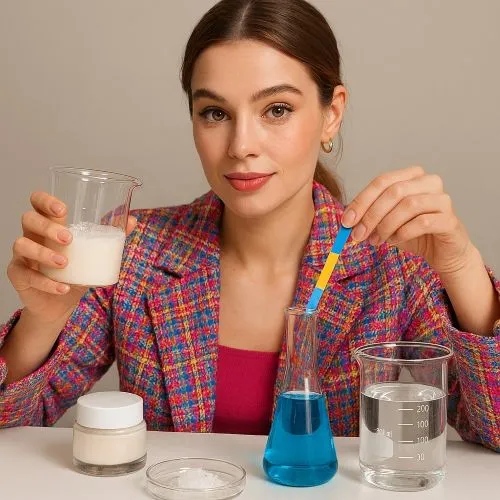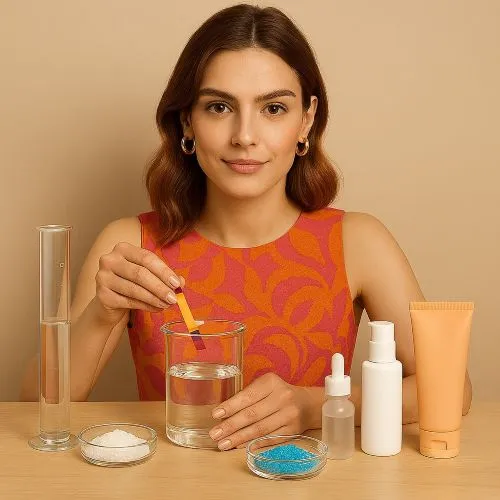-
 DIY: Video master classes
DIY: Video master classes
-
 Aromatherapy
Aromatherapy
-
 Felting master classes
Felting master classes
-
 Eating at home
Eating at home
-
 DIY cosmetics for children
DIY cosmetics for children
-
 Cooking recipes
Cooking recipes
-
 Detergents, cleaning products with your own hands
Detergents, cleaning products with your own hands
-
 Soap making as a business
Soap making as a business
-
 Natural cosmetics. Raw materials for cosmetics and soap.
Natural cosmetics. Raw materials for cosmetics and soap.
-
 Natural oils in cosmetics
Natural oils in cosmetics
-
 News
News
-
 Recipes for balms and conditioners
Recipes for balms and conditioners
-
 Bath Bomb Recipes
Bath Bomb Recipes
-
 Cream recipes. Cream making.
Cream recipes. Cream making.
-
 Lotion recipes. Gel recipes.
Lotion recipes. Gel recipes.
-
 Mask recipes
Mask recipes
-
 Soap recipes. Base soap. Soap from scratch.
Soap recipes. Base soap. Soap from scratch.
-
 Recipes for all occasions
Recipes for all occasions
-
 Natural shampoo recipes
Natural shampoo recipes
-
 Healthy Nutrition Recipes
Healthy Nutrition Recipes
-
 Scrub recipes. Massage tiles. Ubtan
Scrub recipes. Massage tiles. Ubtan
-
 DIY candles
DIY candles
-
 Reference materials, questions, tips
Reference materials, questions, tips
-
 Startup - soap production
Startup - soap production
-
 Hair care. Tips, recipes
Hair care. Tips, recipes
-
 Facial skin care. Cleansers.
Facial skin care. Cleansers.
-
 Body care. Tips, recipes
Body care. Tips, recipes
-
 Photo Reviews
Photo Reviews
-
 Chocolate Handmade
Chocolate Handmade
Solubility and pH: why is this important when creating cosmetics
 Creating effective and stable cosmetic products is more than just mixing ingredients. It's a precise science governed by fundamental chemical principles. Two of the most critical concepts for any formulator to master are solubility and pH. These two factors directly influence a product's stability, efficacy, and safety. Ignoring them can lead to a formula that separates, loses its potency, or, even worse, irritates the skin. This article will demystify the roles of solubility and pH, explain how they affect common cosmetic ingredients, and provide three detailed recipes that demonstrate how to properly manage these parameters to create professional-grade skincare products.
Creating effective and stable cosmetic products is more than just mixing ingredients. It's a precise science governed by fundamental chemical principles. Two of the most critical concepts for any formulator to master are solubility and pH. These two factors directly influence a product's stability, efficacy, and safety. Ignoring them can lead to a formula that separates, loses its potency, or, even worse, irritates the skin. This article will demystify the roles of solubility and pH, explain how they affect common cosmetic ingredients, and provide three detailed recipes that demonstrate how to properly manage these parameters to create professional-grade skincare products.
The Two Pillars of Formulation: Solubility and pH
Understanding these concepts is the key to moving beyond simple recipes to true cosmetic chemistry.
Solubility: The "Like Dissolves Like" Rule
Solubility determines which ingredients can dissolve in a specific medium. In cosmetic formulation, this primarily refers to a substance's ability to dissolve in either water or oil.
-
Water-Soluble Ingredients: These substances, like Hyaluronic Acid, Niacinamide, and many herbal extracts, dissolve in the water phase of a formula. They are often humectants that draw moisture to the skin or actives that work in the upper layers of the epidermis.
-
Oil-Soluble Ingredients: These are substances that dissolve in the oil phase. This includes most carrier oils (Jojoba Oil, Almond Oil), butters (Shea Butter), and oil-soluble vitamins like Vitamin E and Vitamin C derivatives (e.g., Tetrahexyldecyl Ascorbate). These ingredients moisturize, soften, and form an occlusive barrier on the skin.
-
Dual Solubility: Some ingredients, like certain emulsifiers, can interact with both water and oil, making them the perfect bridge between the two phases to create a stable emulsion (a cream or lotion).
pH: The Measure of Acidity and Alkalinity
pH measures the hydrogen ion concentration in a solution, indicating its acidity or alkalinity on a scale from 0 to 14. A pH of 7 is neutral, below 7 is acidic, and above 7 is alkaline.
-
Skin's pH: The healthy skin barrier, or acid mantle, has a natural pH of around 4.5 to 5.5. This slightly acidic environment protects against pathogens and helps the skin retain moisture.
-
Product Efficacy: Many active ingredients, particularly AHA and BHA acids (Glycolic Acid, Salicylic Acid) and L-Ascorbic Acid (Vitamin C), are only effective within a very specific, often low, pH range. If the pH is too high, the ingredient becomes unstable and loses its potency.
-
Product Safety: A product's pH directly affects its safety. Formulas that are too acidic or too alkaline can irritate or damage the skin's protective barrier.
-
Preservative Efficacy: Many preservatives, like those containing Benzoic Acid or Sorbic Acid, only work effectively within a specific pH range. If the pH is outside this range, the preservative can't do its job, and the product can become contaminated with bacteria.
The Importance of Measurement: Using a pH Meter and Adjusters
To ensure a product's stability and efficacy, you need to measure and adjust its pH.
-
pH Meter: A digital pH meter is a crucial tool. pH strips are a good starting point for learning but lack the precision needed for many formulas, especially those with sensitive actives.
-
pH Adjusters: You'll use a pH adjuster to bring your formula to the desired level. Citric Acid or Lactic Acid dissolved in water can be used to lower the pH, while a solution of Sodium Bicarbonate or Arginine can be used to raise it. Always add these adjusters in very small amounts, stirring well and re-checking the pH after each addition.
Three Detailed Recipes Demonstrating pH and Solubility Control
These recipes highlight the importance of managing solubility and pH to create safe, stable, and effective products.
Recipe 1: Brightening Vitamin C Serum (Low pH)
This serum relies on a low pH to ensure the stability and efficacy of L-Ascorbic Acid, a key water-soluble active.
-
Prepare the water phase. In a sterilized beaker, weigh 25g of distilled water.
-
Dissolve the actives. In a separate small beaker, dissolve 5g of L-Ascorbic Acid powder in 5g of distilled water. Once dissolved, slowly add this solution to the main water phase, stirring thoroughly.
-
Add antioxidant and humectant. Add 0.5g of Ferulic Acid and 2g of Glycerin. Stir until all ingredients are dissolved.
-
Check and adjust pH. The pH must be low for Vitamin C to work. Check the pH. It should be around 3.5. If it is higher, add a few drops of Citric Acid solution until the desired pH is reached.
-
Add preservative and pour. Add 0.5g of a broad-spectrum preservative that is effective at a low pH, such as Geogard 221. Pour into a dark, air-tight dropper bottle.
Recommendations for Use: Apply 2-3 drops to a clean face in the morning. Follow with a moisturizer and sunscreen.
Storage: Store in a cool, dark place. The shelf life is short, approximately 3-4 weeks.
Recipe 2: Hydrating Niacinamide Serum (Neutral pH)
This serum uses Niacinamide, a water-soluble active that works best at a pH close to the skin's natural balance.
-
Prepare the gel phase. In a sterilized beaker, weigh 85g of distilled water. Slowly sprinkle 0.5g of Xanthan Gum over the surface, stirring vigorously until a uniform gel forms. Let it sit for 30 minutes.
-
Dissolve the actives. In a separate small beaker, dissolve 5g of Niacinamide powder in 5g of distilled water. Stir until fully dissolved.
-
Combine and stir. Add the Niacinamide solution to the main gel. Stir gently but thoroughly.
-
Check and adjust pH. Check the pH. It should be between 5.5 and 6.5 for Niacinamide to be most effective. If it's too low, add a few drops of Sodium Bicarbonate solution.
-
Add preservative and pour. Add 1g of a broad-spectrum preservative like Euxyl PE 9010. Pour into a clean bottle with a pump or dropper.
Recommendations for Use: Apply to a clean face in the morning or evening before a moisturizer.
Storage: Store in a cool, dark place. The shelf life is 3-6 months.
Recipe 3: Soothing Oil-Based Balm (No pH)
This formula is a great example of an oil-soluble product that does not have a pH, simplifying the formulation process.
-
Prepare the butter and wax phase. In a heat-safe beaker, weigh 20g of Shea Butter and 5g of Beeswax. Gently melt them in a double boiler.
-
Add the oils. Once the butter and wax are fully melted, add 10g of Jojoba Oil and 5g of Sweet Almond Oil. Stir until the mixture is uniform.
-
Add the oil-soluble active. Remove from heat and, when the mixture has cooled slightly but is still liquid, add 1g of Vitamin E (Tocopherol). Stir to combine.
-
Add fragrance and pour. Add a few drops of a skin-safe essential oil (e.g., lavender). Pour the liquid balm into a clean tin or pot.
Recommendations for Use: Massage a small amount onto dry skin or lips as needed.
Storage: Store in a cool, dry place away from direct sunlight. The shelf life is up to one year.

Advantages of a DIY Formula with Controlled Solubility and pH
Mastering solubility and pH gives your homemade products a significant edge over industrial alternatives.
-
Maximum Potency: By ensuring the actives are in their optimal pH range and fully dissolved, you can guarantee that they are working at their highest possible potency, unlike commercial products that may have degraded on the shelf.
-
Tailored Safety: You can create products with a pH that is perfectly suited to your skin's needs, avoiding the irritation that can be caused by mass-market products with an incorrect pH.
-
Avoidance of Conflicts: You can carefully select ingredients to ensure they are compatible, preventing deactivation of actives and providing a stable, reliable product.
-
Ingredient Purity: You control what goes into your formula, avoiding fillers and additives that provide no benefit. You are using precisely the ingredients you need, in the form they need to be in.
By understanding solubility and pH, you elevate your cosmetic formulation skills from a hobby to a truly professional practice, creating products that are superior in their effectiveness, safety, and purity.
Mylo Opt Cosmetics Blog – Your Reliable Guide to Beauty and Care
Welcome to the Mylo Opt cosmetics blog! Here, you will find valuable advice, interesting recipes, and professional recommendations for creating soap, cosmetics, and candles with your own hands. Our blog is designed for anyone passionate about natural cosmetics, looking for new ideas, and wanting to learn more about producing high-quality skincare and haircare products. We share tested recipes, useful tips, and the latest news from the world of cosmetics.
Why Choose the Mylo Opt Cosmetics Blog?
Mylo Opt is not just an online store; it is a community of people passionate about creating natural cosmetics. Here are a few reasons why our blog will be useful to you:
- Experience and Expertise: Our authors are experienced cosmetologists, soap makers, and aromatherapy specialists. We share reliable and tested recipes that have undergone thorough testing and received positive feedback.
- Credibility and Authority: We ensure that all information in our blog is up-to-date and reliable. We reference scientific research and verified sources so that you can trust the quality of the information provided.
- Reader-Focused: Our content is tailored to you – our readers. We strive to answer your questions, solve your problems, and inspire new achievements in the world of natural cosmetics.
Popular Products from the Mylo Opt Online Store
Before we move on to recipes and tips, let us introduce you to the most popular products from our online store, which will help you create high-quality and natural cosmetics:
- Soap Bases: High-quality soap bases allow you to create beautiful and beneficial handmade soaps. We offer glycerin bases, bases with added oils and extracts, as well as transparent and white bases.
- Fragrance Oils and Fragrances: Give your products a unique scent with our fragrance oils and fragrances. We offer a wide range of scents – from fresh and floral to spicy and woody.
- Essential Oils: Essential oils are natural components that not only add fragrance to products but also offer beneficial properties for the skin and hair. Our range includes lavender, mint, eucalyptus, lemon, and many other oils.
- Active Ingredients: Vitamins, antioxidants, hyaluronic acid, and other active ingredients help improve the properties of your cosmetics. We offer only tested and high-quality components.
- Pigments and Dyes: Give your products bright and lasting colors with our pigments and dyes. They are safe for the skin and suitable for use in soap, cosmetics, and candles.
- Emulsifiers and Thickeners: To create creams and lotions, you will need emulsifiers and thickeners. We offer quality ingredients that help you achieve the desired consistency and stability of the product.
- Soap and Candle Molds: Create unique items with our soap and candle molds. Our range includes molds of various sizes and designs.
- Everything for Candles: Wax, wicks, fragrances, and dyes for candles – we have everything you need to create beautiful and fragrant candles.
Recipes and Tips for Making Handmade Soap
Cold Process Soap for Beginners
Making cold process soap is an exciting process that allows you to control all the ingredients and create unique recipes. Here is one simple cold process soap recipe for beginners:
Ingredients:
- 500 g olive oil
- 300 g coconut oil
- 200 g palm oil
- 150 g castor oil
- 120 g lye (sodium hydroxide)
- 300 ml distilled water
- Essential oils (lavender, mint, eucalyptus)
- Pigments or natural dyes (optional)
Process:
- Prepare all ingredients and tools. Always use protective gloves and goggles, as lye can be dangerous.
- Weigh the lye and water. Slowly add the lye to the water, stirring until it fully dissolves. Allow the mixture to cool to 40-45°C.
- Weigh the oils and melt them in a water bath. When the oils and lye solution reach the same temperature (about 40-45°C), slowly pour the lye into the oils, stirring constantly.
- Use an immersion blender to mix until trace (when the mixture thickens and leaves a trail when stirred).
- Add essential oils and pigments if desired. Mix thoroughly.
- Pour the mixture into a prepared mold and cover with a towel. Let the soap harden for 24-48 hours.
- Remove the soap from the mold and cut it into bars. Allow the soap to cure for 4-6 weeks before use.
Homemade Cosmetics Recipes
DIY Moisturizing Cream
Creating a moisturizing cream at home allows you to control the ingredients and adapt the recipe to your needs. Here is a simple recipe for a moisturizing cream:
Ingredients:
- 50 ml rose water
- 50 ml distilled water
- 10 g emulsifier (e.g., Olivem 1000)
- 10 ml jojoba oil
- 5 ml avocado oil
- 5 drops lavender essential oil
- 2 drops tea tree essential oil
Process:
- Weigh all the ingredients.
- In a water bath, melt the emulsifier with the oils until smooth.
- Separately, heat the water phase (rose water and distilled water) to the same temperature as the oil phase.
- Slowly pour the water phase into the oil phase, stirring constantly.
- Use an immersion blender to emulsify until you achieve a creamy consistency.
- Add essential oils and mix thoroughly.
- Pour the cream into a sterilized jar and allow it to cool.
DIY Candle Recipes
Aromatic Soy Candle
Creating aromatic candles is a creative process that allows you to experiment with scents and designs. Here is a simple recipe for a soy candle:
Ingredients:
- 200 g soy wax
- 20 ml fragrance oil (e.g., vanilla or lavender)
- Wick for candles
- Dyes (optional)
- Glass or metal candle mold
Process:
- Melt the soy wax in a water bath until liquid.
- Add the fragrance oil and dyes if desired. Mix thoroughly.
- Secure the wick in the center of the candle mold.
- Slowly pour the melted wax into the mold, holding the wick.
- Allow the candle to fully harden (about 24 hours).
- Trim the wick to the desired length and enjoy your aromatic candle.
Tips for Beginners in Cream Making
- Learn the Basics: Before starting to create creams, it is important to learn the basic principles and ingredients used in cream making.
- Experiment with Formulas: Do not be afraid to experiment with different ingredients and proportions to find the perfect formula for your skin.
- Use Quality Ingredients: The effectiveness and safety of your product depend on the quality of the ingredients. Always choose tested and natural components.
- Maintain Hygiene: It is important to maintain cleanliness and sterility when creating cosmetics to avoid contamination and spoilage of the product.
- Start with Simple Recipes: For beginners, it is best to start with simple recipes to master the basic techniques and principles of cream making.
Conclusion
Our Mylo Opt cosmetics blog is your reliable source of information and inspiration in the world of natural cosmetics. We share useful tips, tested recipes, and the latest news to help you create quality and effective products for skin, hair, and home care. Subscribe to our blog, follow the updates, and discover new opportunities in the world of natural cosmetics with Mylo Opt!





